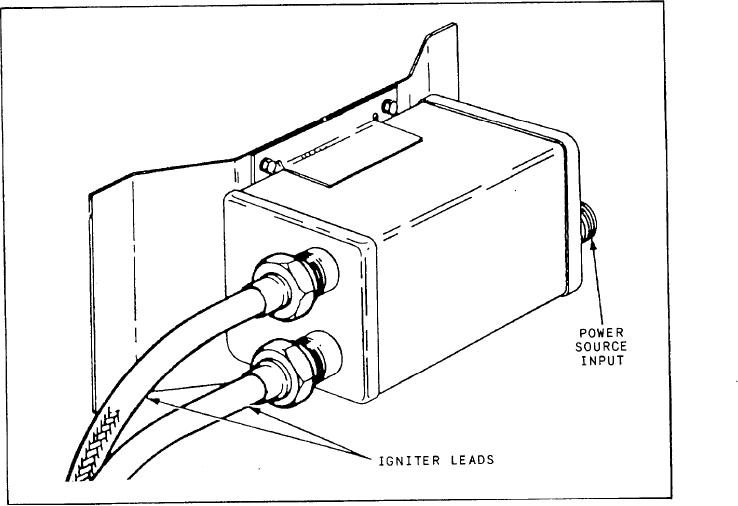
classified as ac or dc systems, and they use either
during the start cycle. After combustion starts, the
a high- or low-voltage capacitor.
ignition system may be turned off. However, some
aircraft use continuously operating ignition systems
High-Energy, Capacitor-Discharge
to ensure an immediate relight in case of flame-
Dc Ignition System
out. Pressure switches or mechanical linkages that
automatically reactivate the ignition system are
The ignition exciter gets its input from the low-
also used in some aircraft for the same reason.
voltage dc supply of the aircraft electrical system.
The ignition systems on all jet engines are
See figure 6-5. The ignition system has three
basically the same, but terminology varies between
major components. The system consists of one
engine manufacturers. The part that goes in the
ignition exciter and two lead assemblies. The
combustion chamber to supply spark is called a
exciter unit is hermetically sealed to protect
spark plug, an igniter plug, or a spark igniter.
internal components from moisture, foreign
They may look a little different and maybe called
matter, pressure changes, and adverse operating
by different names, but they all do basically the
conditions. This type of construction eliminates
same job. Modern jet engines require an ignition
the possibility of flashover at high altitude due
system with a high voltage and high heat spark.
to pressure change and ensures positive radio noise
The high-energy, capacitor-discharge ignition
shielding. The complete system, including leads
system is the most widely used ignition system.
and connectors, is built to ensure adequate
It provides a high-tension spark capable of
shielding against leakage of high-frequency
blasting carbon deposits and vaporizing large
voltage. High-frequency leakage would interfere
amounts of fuel. This high-energy system makes
with radio reception of the aircraft. The system's
starts with carbon-fouled igniter plugs possible,
primary purpose is to supply energy to two spark
and it also helps in air restarts at high altitude.
igniters.
High-energy, capacitor-discharge systems are
Figure 6-5.-Typical sealed ignition exciter box.
6-7

